After leaving his previous business with $2.5M, Zeb Evans, Founder of ClickUp, decided to create a Craigslist competitor.
He put together a team he trusted and began to build.
One of the first projects they took on was to build an internal productivity tool.
None of the options on the market actually made them more productive (counter-intuitively). They all had major flaws for their team. And none of them could serve as an all-in-one productivity app.
This led to productivity loss due to app switching and different systems and processes.
Quickly the team realized that this internal tool was actually the bigger need. It had a real vision and was solving a massive problem.
Companies are too tool heavy. On average, using 89 apps in 2022 (this number skyrocketed to 187 for companies with over 2k employees). Toggling tax from using all these apps adds up to 4 hours per week - about 10% of working time.
ClickUp could give people their time back. Actually making them more productive.
Zeb put all his money from his previous business into ClickUp (as convertible notes) and the team went all-in.

In less than two years the team bootstrapped their way to profitability and $20M ARR. Insane!
And just like that, the one-tool to rule them all was born.

From then on ClickUp has skyrocketed.
They have raised $537.5M in total - with their latest valuation at $4B.
A quick note before we begin. Although I’ll touch on their journey from $20M to $4B. The focus will be on how ClickUp got to $20M.
Because this is the story of how ClickUp went from Zero to One. 🚀
Business model: How ClickUp makes money
ClickUp’s business model is two-fold.
Firstly, they use a freemium model (meaning they have a free plan users can choose, with more advanced features, or more access to those features for a premium - hence freemium) for personal use and smaller teams. You get all of this:
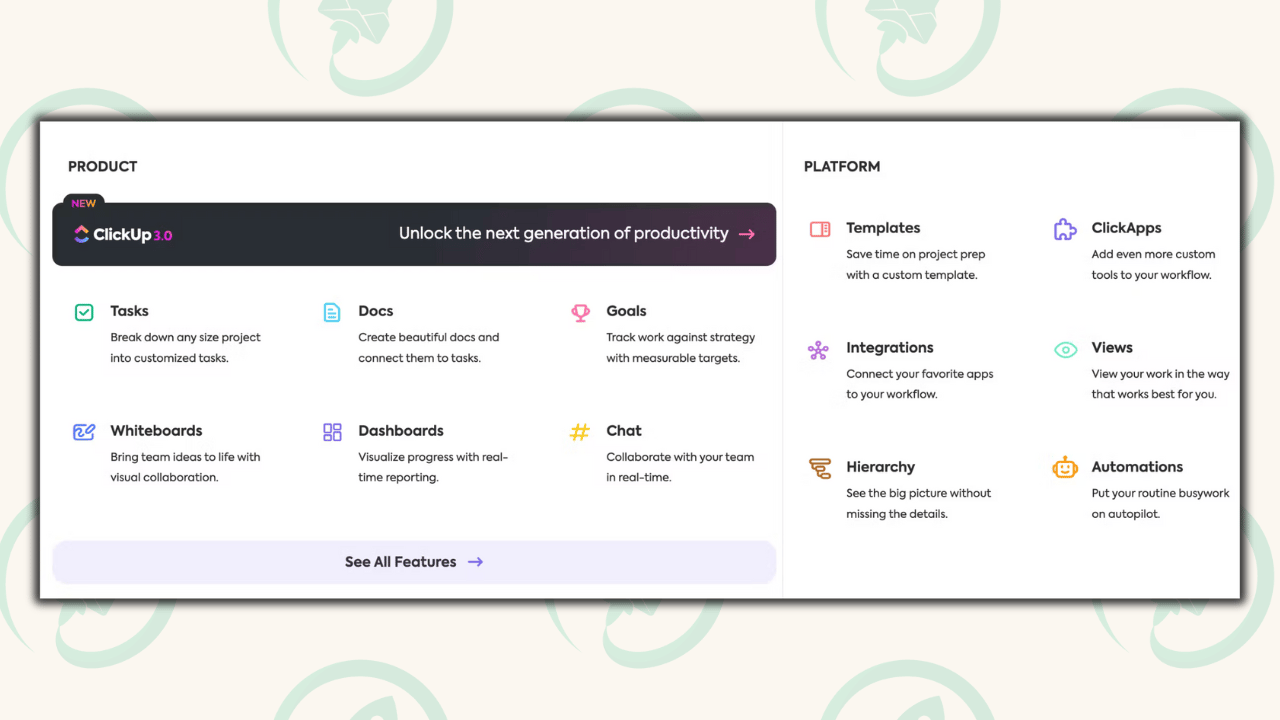
And more. For one monthly fee (with three tiers).
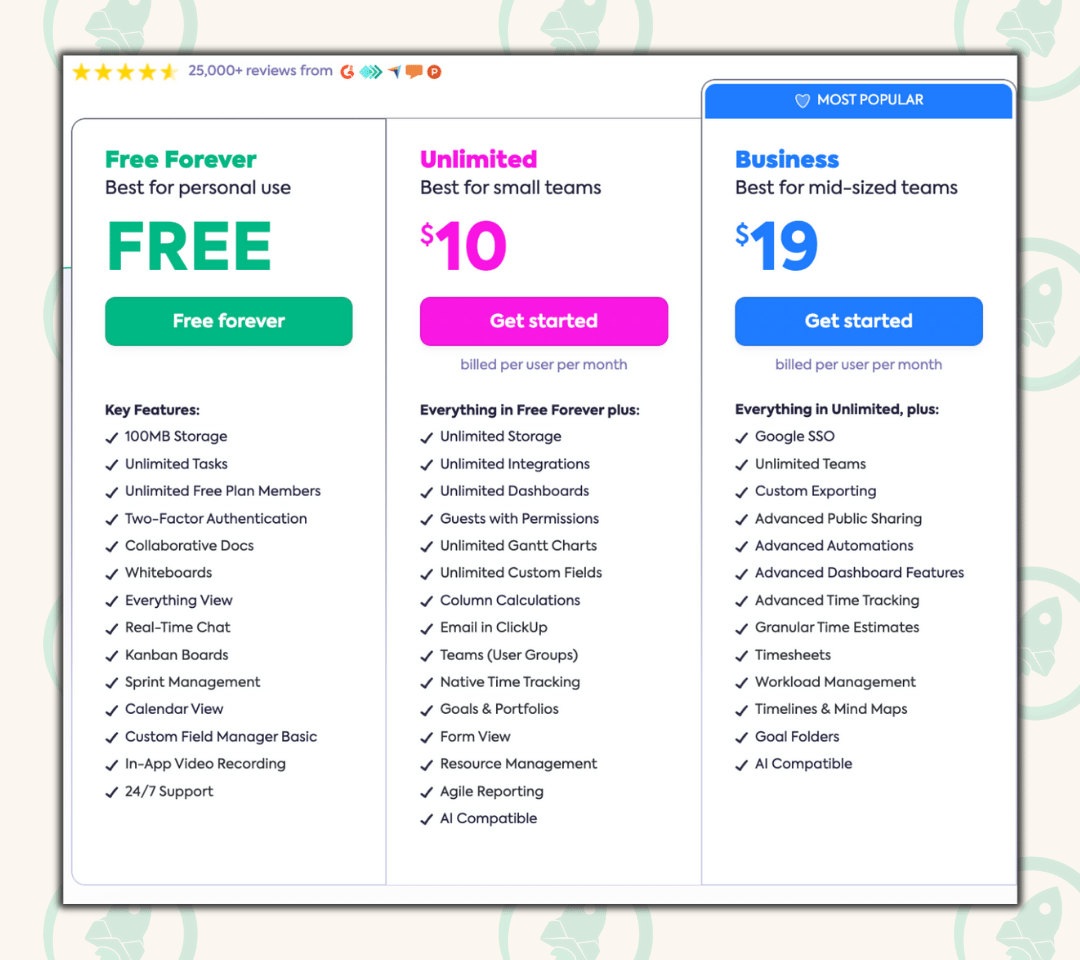
Or alternatively, you can save 30% with their yearly plans.
Secondly, they offer enterprise plans for large companies. Which offers everything you get on their highest plan, plus extras such as white labeling.
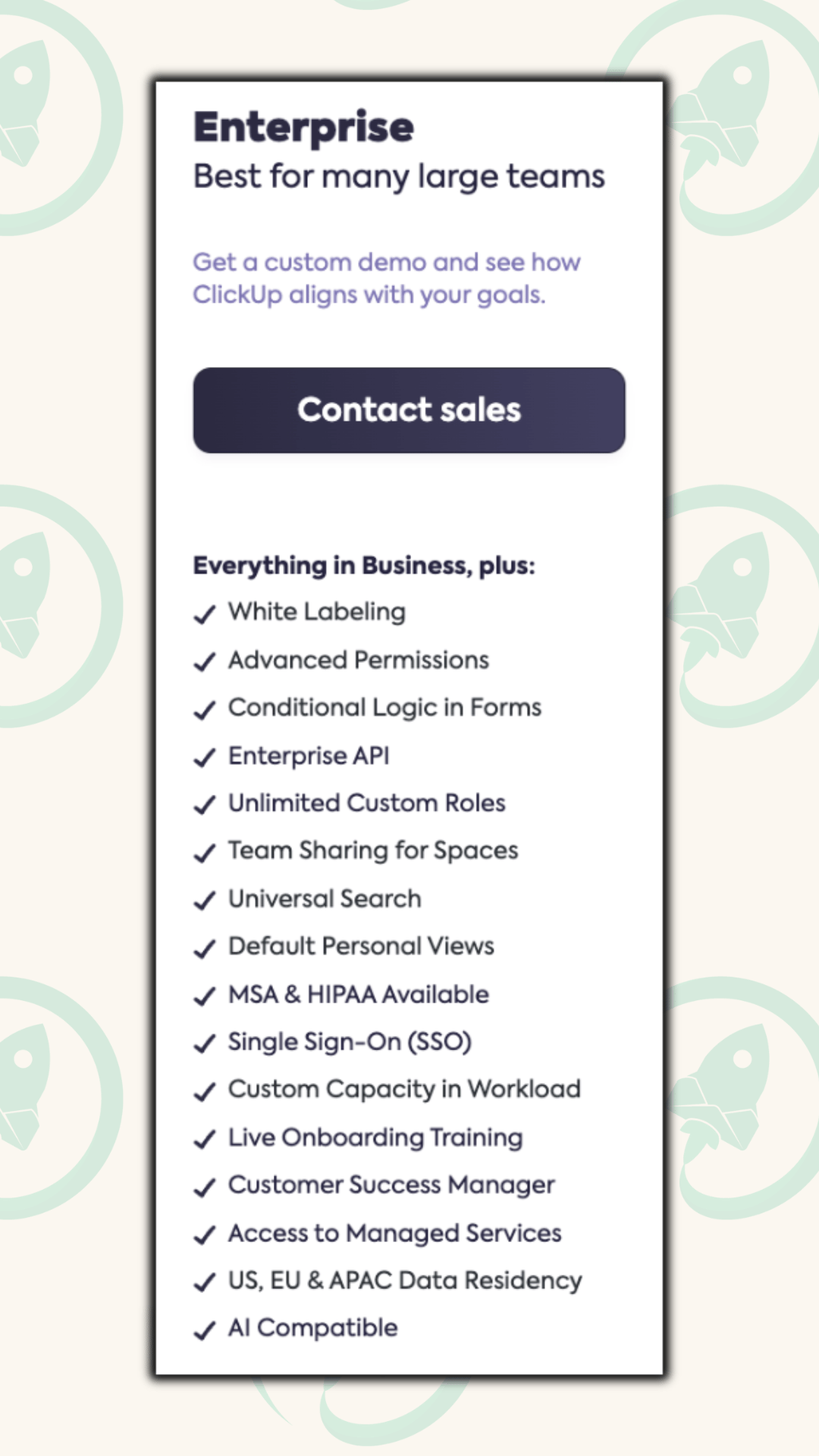
Making it the best way to bring teams together on ONE PLATFORM and get more done.
ClickUp’s Growth
After deciding to go all-in on ClickUp, the team spent ~7 months building.
They knew they were entering one of the most competitive software industries.
So they focused heavily on user experience, design, and branding. They thought this would make them appear bigger and punch above their weight.
They were right.
ClickUp launched in mid-2017, and in less than two years had reached $20M ARR. With no outside funding. And no marketing budget.
From here, growth only sped up.
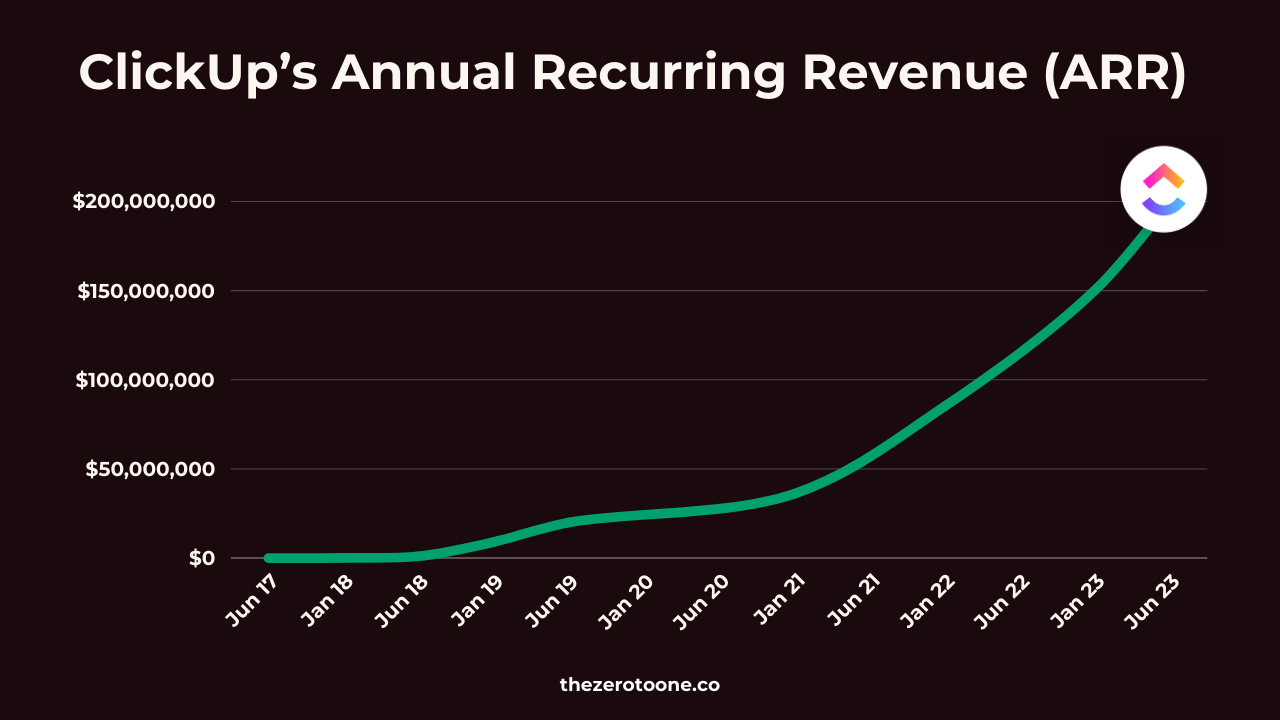
And ClickUp started collecting milestones:
June 2020: 100k+ customers (about three years after launch).
October 2020: $36M ARR.
Jan 2022: $85M ARR and 200k+ customers.
Jan 2023: $150M ARR and >100% YoY growth.
ClickUp now serves over 2M teams with ~10M total users.
Some of their current customers include teams at Google, Nike, Netflix, Uber, Airbnb, Spotify, IBM, and Booking.com.
Key Success Factors (KSFs)
There have been many reasons for ClickUp’s rise to success. But what stood out most to me is the process they took to PMF.
ClickUp focused on creating Natural PMF. I.e., product-led growth combined with virality and organic growth. Rather than the more traditional route of raising investor funds to purchase users on the way to PMF (Artificial PMF).
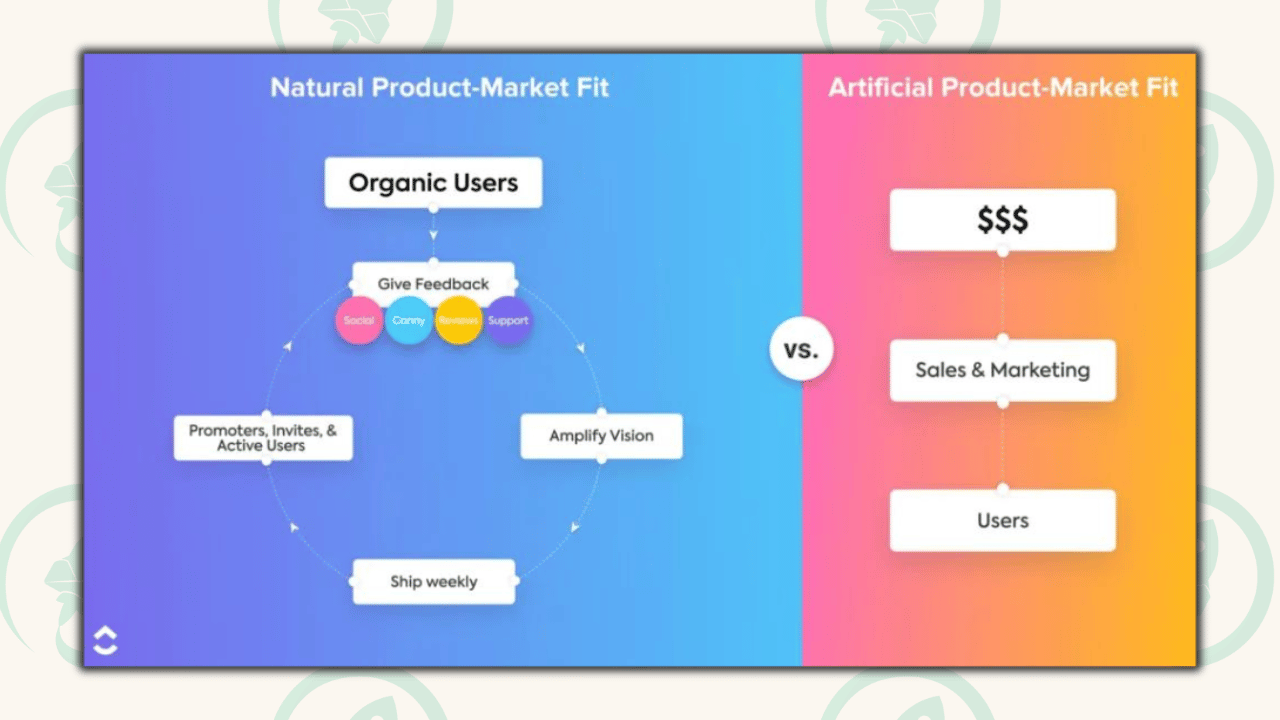
This way ClickUp could focus on building a better product. Which in the end created a faster route to PMF. And eventually, an easier path to raising money and scaling.
Why?
Because they had built an obsessed fan base of active users and advocates by listening to their customers' needs and delivering on them.
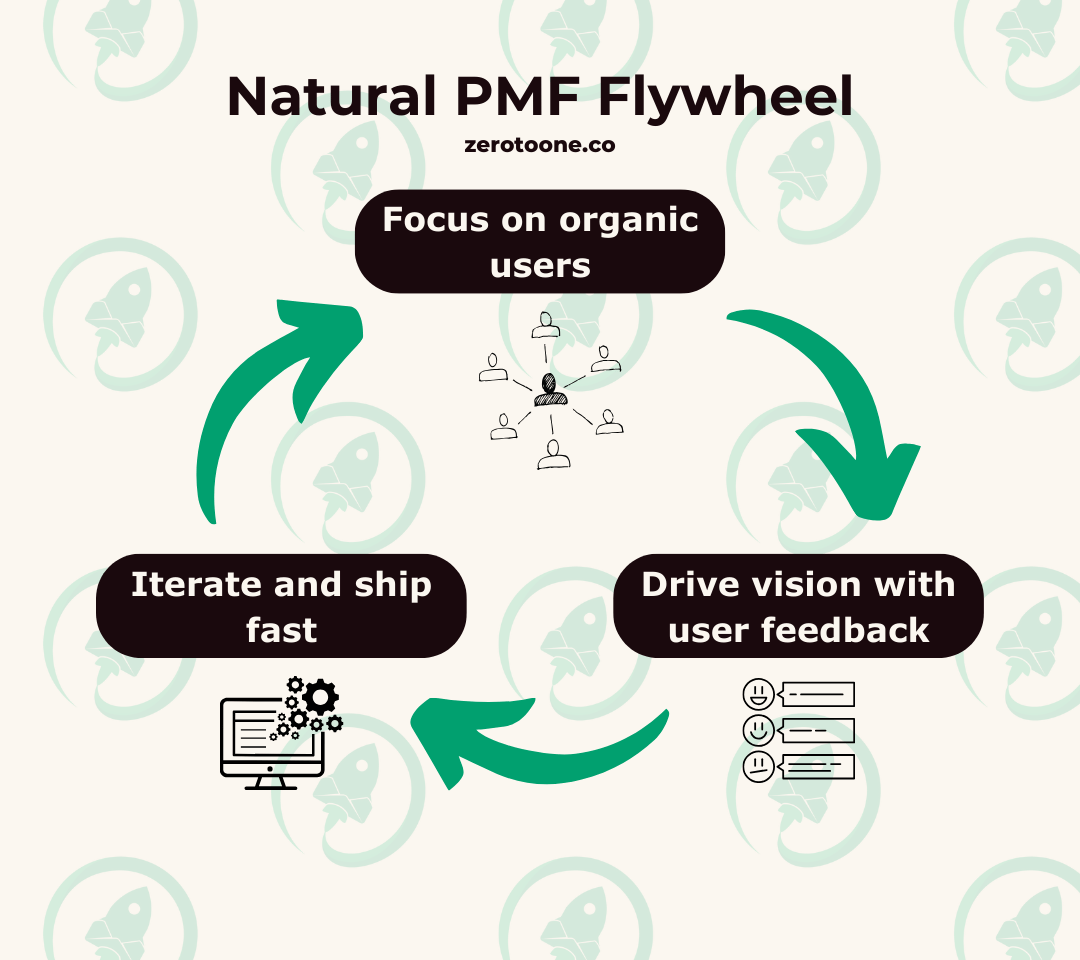
ClickUp created a Natural PMF Flywheel. Combining three key aspects:
🌻 1. Focus on organic users: Zeb and the team focused on winning free, organic users who genuinely loved the product. To do this, they focused on winning users with organic content, such as dominating their SEO spaces. They now generate over $12M worth of clicks every month. For FREE.
💬 2. Drive their vision with user feedback: Built an authentic feedback loop with their customers to bring them closer to Natural PMF. Listening to their needs, developing a real connection with them, and building a trusting two-way relationship. All while keeping ClickUp’s vision in mind.
⏩ 3. Iterate and ship fast: ClickUp focused on progress rather than perfection. Shipping a new release every Friday. A speed and consistency their competitors just can’t keep up with. Delivering on features and requests strengthened trust with their customers and led them to become ambassadors.
🌻 1. Focused on organic users
Zeb and the ClickUp team have always been obsessed with helping their customers. They know that what matters at the end of the day is solving real problems for your users.
So they set out to do that before you even become a customer.
Actively helping potential users to build the ClickUp brand and community.
From early on they focused on writing useful and actionable content for their target customers.
This meant writing about topics such as:
How to manage projects. 👩💼
How to work effectively in a remote environment. 🌍
How to be agile and move quickly. 🏃♂️
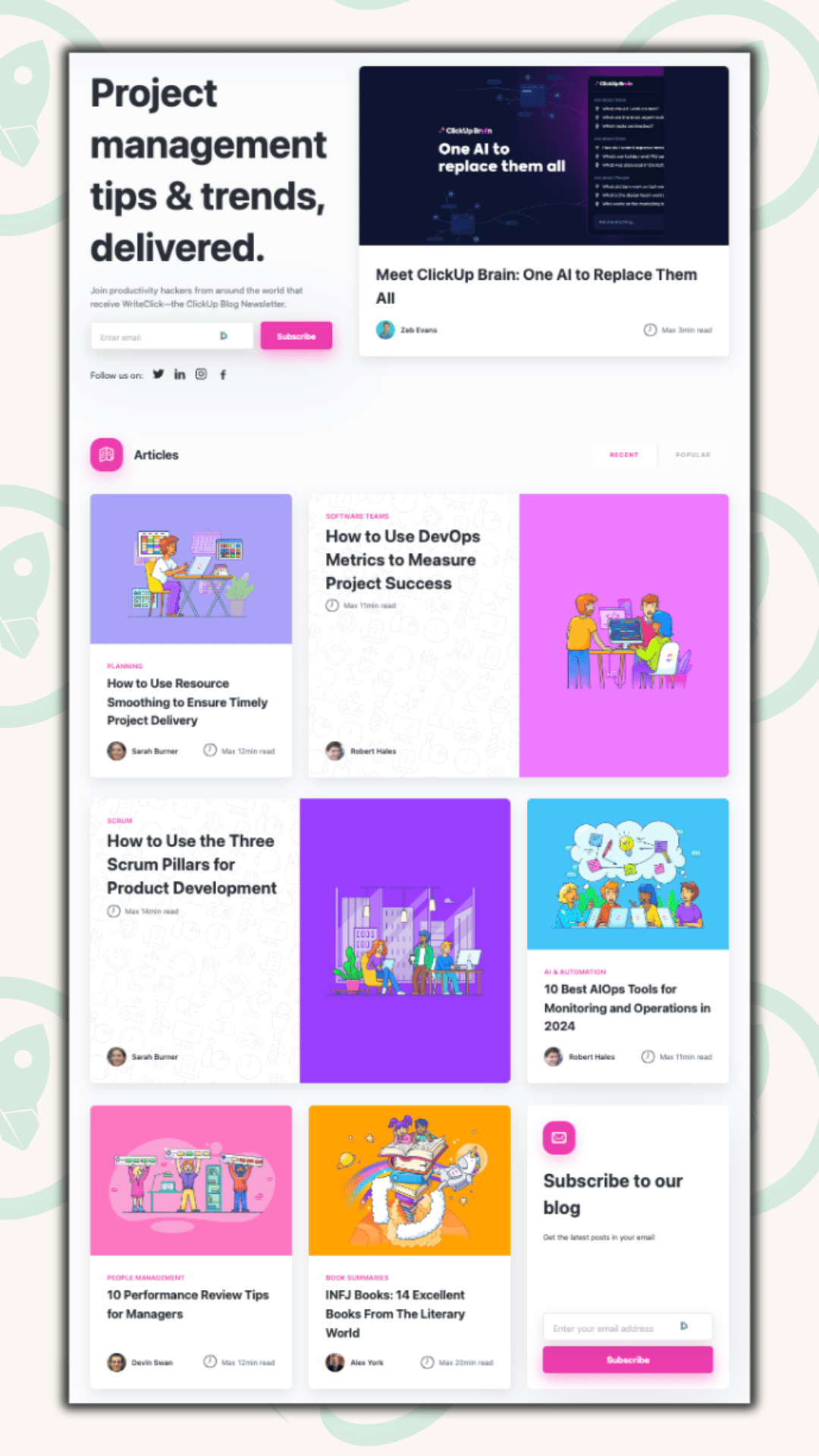
They consistently posted at least one article a day for years.
And although returns were slow at first, they understood that content is a long-term game. Unlike many of their competitors at the time.
Their competitors were not focusing on content or SEO - leaving a clear path to giving ClickUp an edge.
ClickUp now ranks for over 60k keywords today.
What they’ve also done to rank, build trust, and take customers from competitors is having dedicated competitor comparison pages - showing how ClickUp can better solve their users problems than the alternatives.
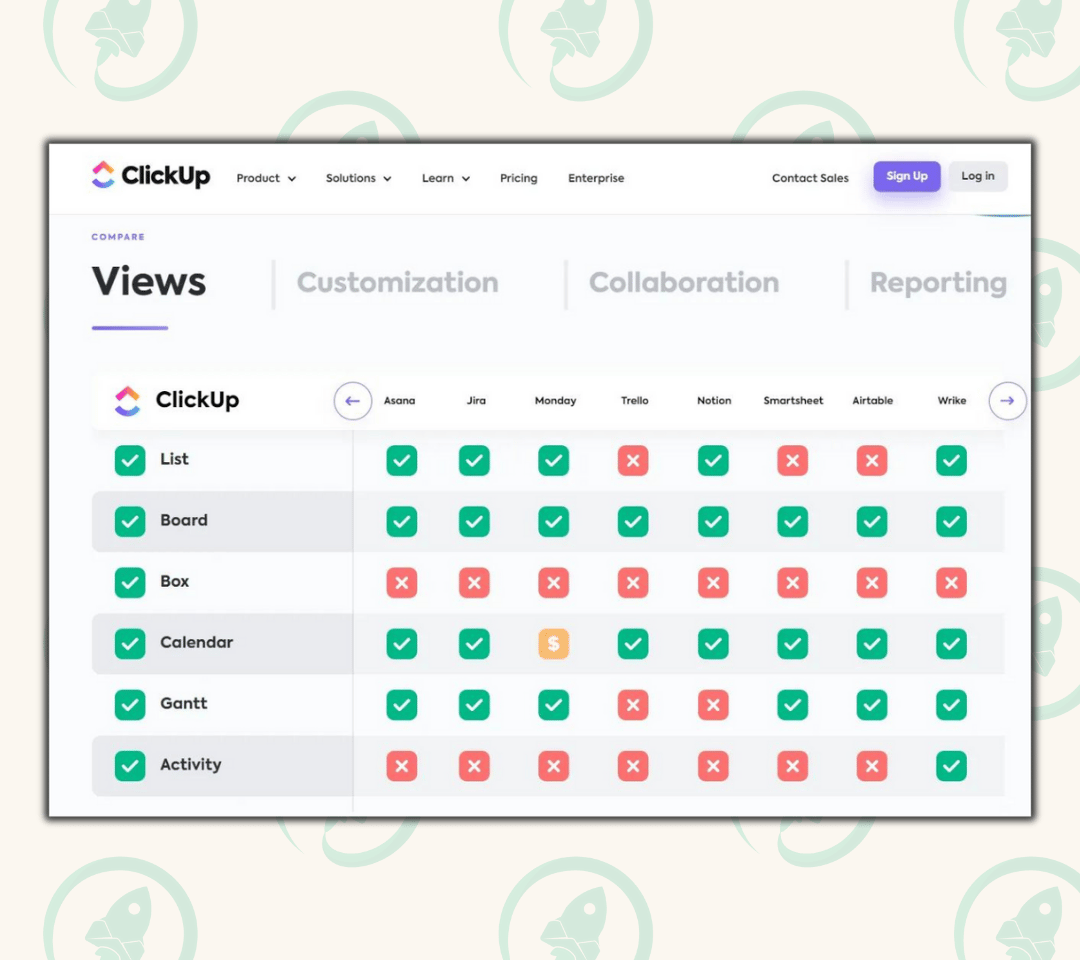
Building this foundation of content has proven to be critical years later.
As they now generate over $12M worth of clicks - all for free.
ClickUp didn’t just stop here to drive organic users.
Another key strategy of theirs was to engage with their potential customers and build communities where their target customers were hanging out - e.g., Reddit and Quora.
These were hotspots of people looking for the best productivity tools. ClickUp used this as an opportunity to provide value and win customers through both trust-building and constantly being in their faces.
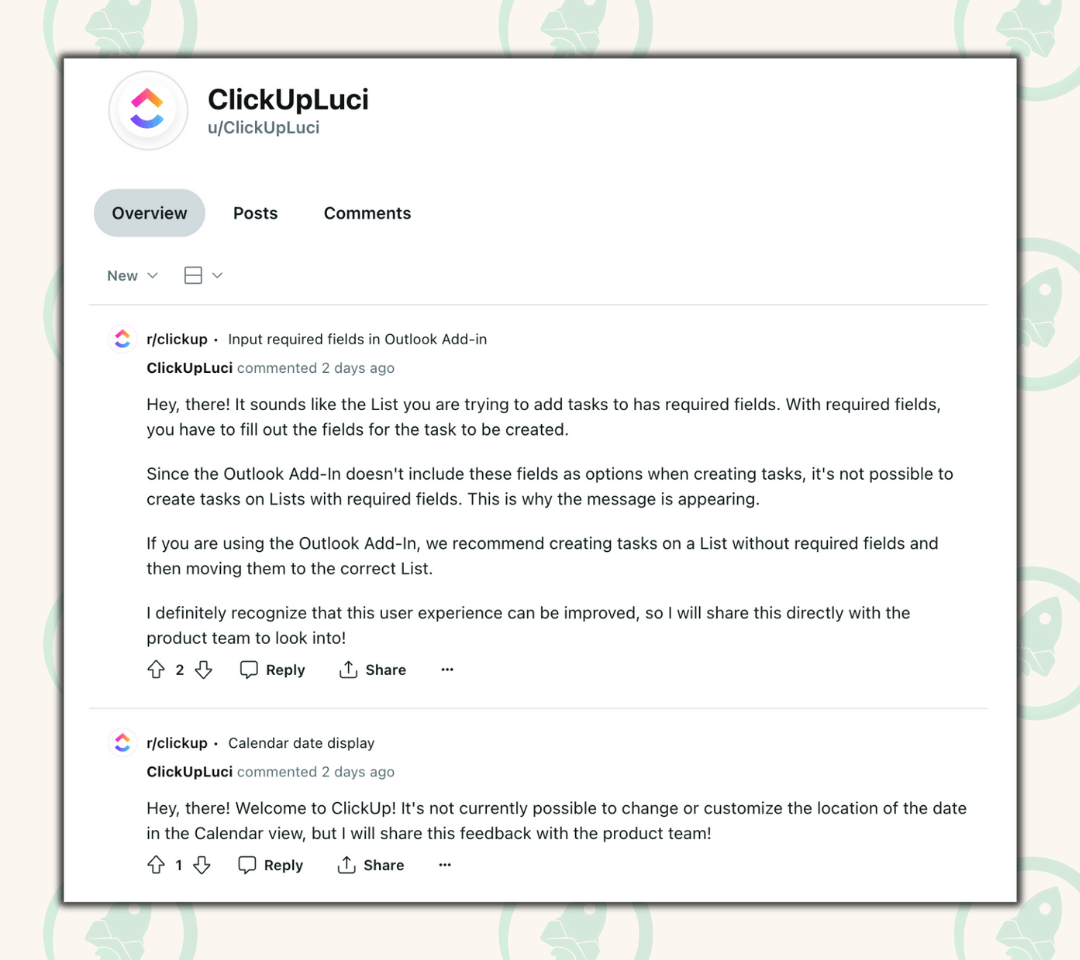
What’s great about organic users is that they are often your best promoters. ClickUp leveraged this.
They love users who promote their product - and they make it easy for them to do so, e.g., with seamless team invites.
Talking about teammates, what I also love about ClickUp’s growth strategy and product is that the tool becomes inherently more useful and fun to use when your team also uses it - meaning users were naturally incentivized to promote it.
Further leveraging the snowball effect you get from organic users.
💬 2. Drove their vision with user feedback
ClickUp built an authentic feedback loop with their customers to bring them closer to Natural PMF.
Listening to their needs, developing a real connection with them, and building a trusting two-way relationship. All while keeping ClickUp’s vision in mind.
Organic users can be your best promoters - you need to make sure you get them involved in the product development.
This meant speaking to users - collecting feedback, having zoom calls, meeting in person.
They used this to build a real connection with their customers.
Then they used this feedback and connection to see what was working, what wasn’t, and what needed to be added to their product.
But this can be a tricky balancing act to manage. Because while it’s important to action customer feedback, you also don’t want to become a feature factory or just a carbon copy of what already exists.
It is your product at the end of the day.
So ClickUp made sure to be careful in fusing user feedback with their vision. Making sure that every new feature, product, or integration kept in line with their mission to help give people their time back.
Listening and then also delivering to their users created this authentic feedback loop for ClickUp. Building extreme trust, a loyal community, and allowed their product to stand out.
⏩ 3. Iterated and shipped fast
This final step completed their Natural PMF flywheel and allowed ClickUp to shine as a North Star for anyone trying to use Product-Led Growth.
Because although it is important to drive organic users and listen to their feedback - what pulled everything together for ClickUp was shipping fast.
They delivered on features, requests, and bug fixes. And they delivered fast.
They have shipped 8 products with 15+ views (catering to all types of teams), and in 2022 alone, they added 100+ new features and integrations.
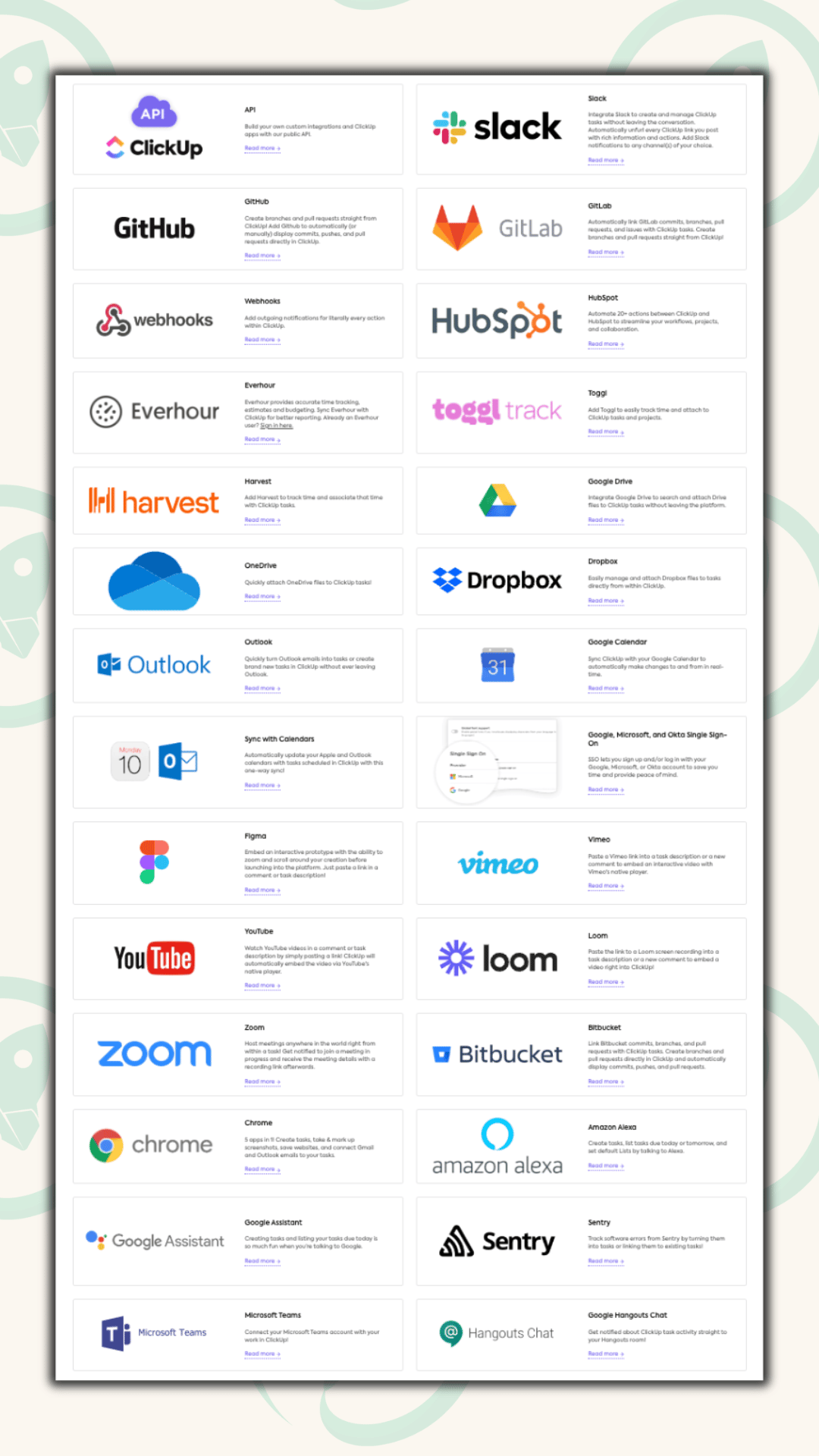
This confirms and strengthens their users’ trust in them and turns them into your best advertisers. Because they feel heard.
ClickUp are very clear to choose progress over perfection. A core value at the company. Because they believe that high frequency compounds over time - getting to perfect at a faster rate.
So they launch a new release every Friday. Consistently.
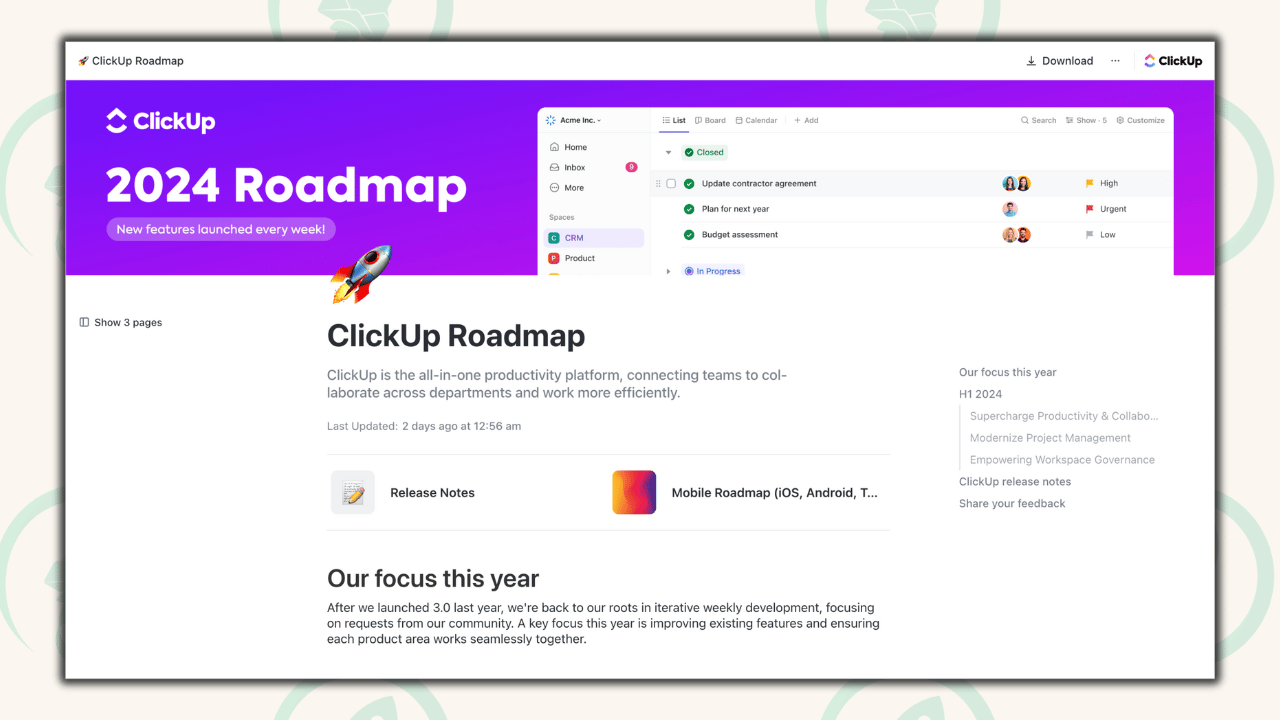
This speed and consistency became a massive competitive advantage - their competition couldn’t keep up.
Because unlike their competition, they were okay with launching imperfect products.
They knew they would improve them with the help of their users.
This quick iteration boosted overall efficiency, which matters as much as growth in the early stages of your product.
ClickUp used this bias toward action and learnt to tolerate the risk of failure in order to build a better product that their customers felt apart of.
Actions you can take to replicate ClickUp’s success
Focus on UX, branding, and design 🎨
ClickUp entered one of the most competitive software markets - project management and productivity tools.
They were up against industry giants. Asana, Monday.com, JIRA, and more.
When you’re in a position like this, you need to punch above your weight.
You’re David. They’re Goliath.
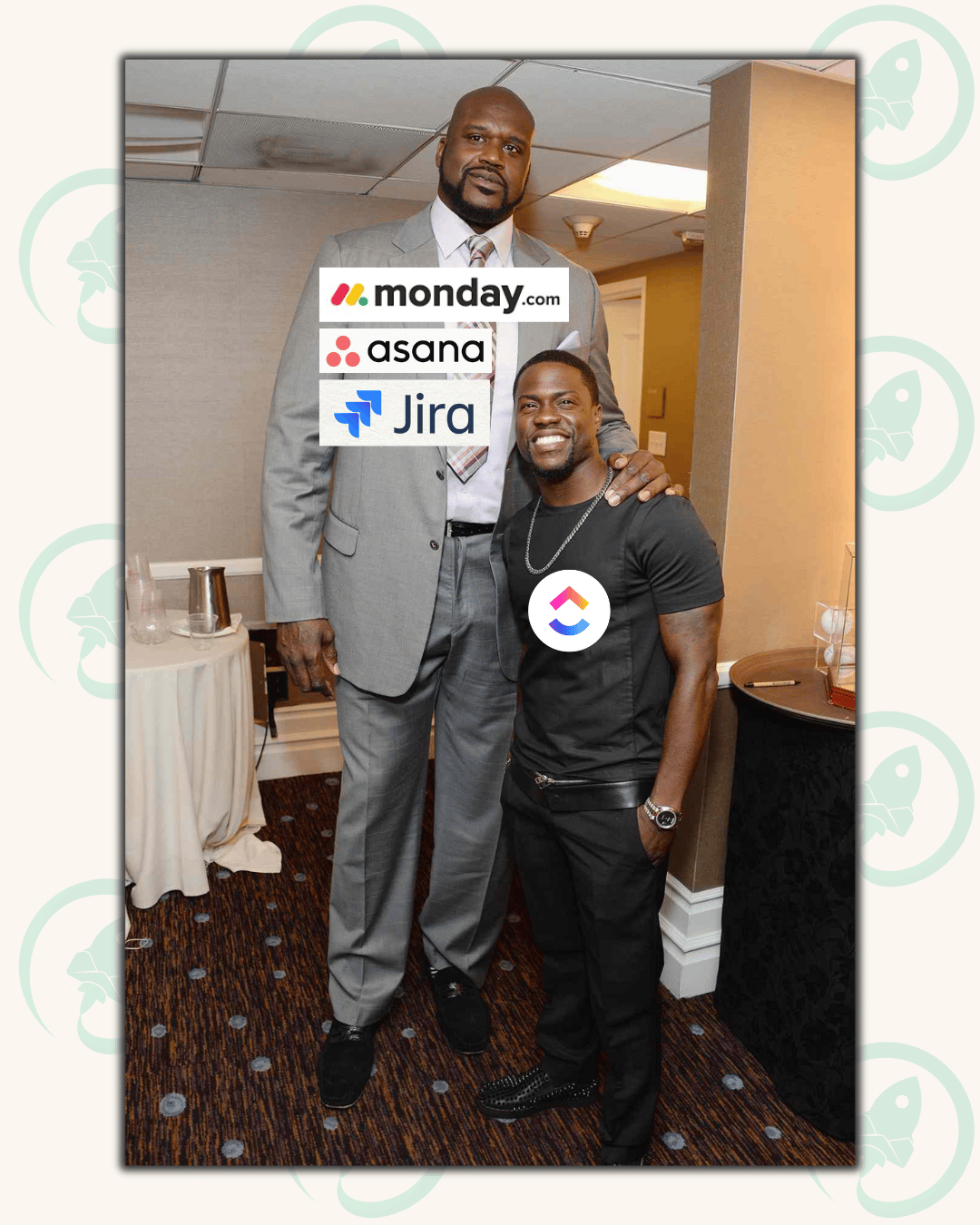
But one way you can stand out and appear bigger than you are, is by obsessing over exceptional UX, professional and unique design, and strong branding.
This is something ClickUp did (and still does) brilliantly. Their user experience is awesome (from personal experience), their design is vibrant and inviting, and their branding has a unique and memorable voice.
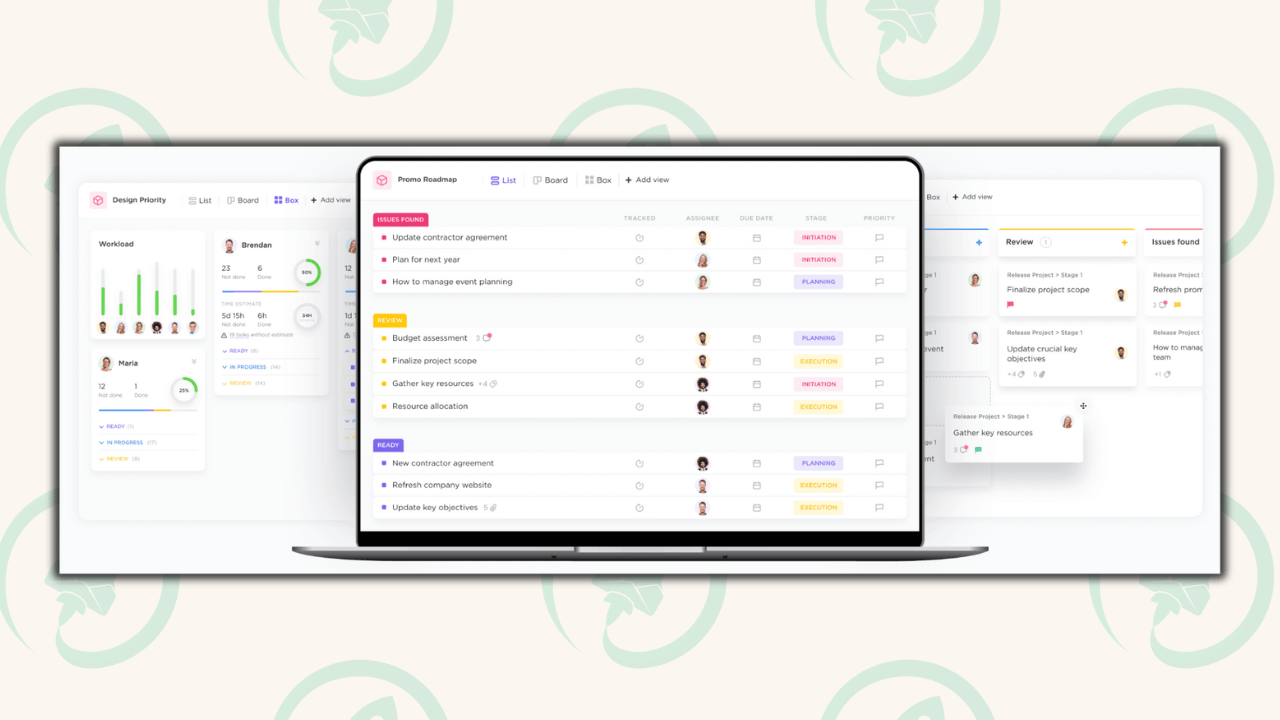
ClickUp used these three things to keep them in your mind.
So when you do need a tool for project management - your first thought is ClickUp.
Focusing on these key aspects leads users to think you are competing in the same weight class as your competitors - even though you’re not quite there yet.
Build what matters most for your users 🏗️
When building, it’s easy to get caught up in a cycle of feature after feature. Thinking you’re making a better product.
You’re building right? Adding more functionality? Surely the product is better??
But these features can easily become clutter.
And while they might have a use case, they can hurt what actually matters most to your users.
What matters most to ClickUp is making people more productive.
Sure they could’ve added a bunch of features, that in themselves, add value.
But in doing so, they would’ve risked their awesome UX, making the product overly complex - overwhelming their users and ultimately making them less productive.
So how did ClickUp avoid this? And how can you avoid this?
Focus on your vision. Remember why you are building in the first place.
Have a clear and focused why and stick to it.
For ClickUp it’s giving people their time back. For Lempire (last week’s deep dive), its helping entrepreneurs build profitable businesses.
Don’t become a feature factory.
Build what matters most to your users. Build your vision.
Consistently post valuable content 📹
Throughout their business, ClickUp have focused on speed and consistency. These are things big corporates just can’t compete on.
They do this with their product - shipping every Friday.
But they also did (and still do) this with their organic marketing.
They posted a blog post every single day. Consistently. For years.
This has built a rock-solid foundation for their brand.
ClickUp became an overachiever for SEO (compared to their established competitors). This SEO which now generates them $12M+ in free traffic per month.
That is insane. That’s over $144M of free clicks per year.
But it didn’t happen over night. Content is a slower game. A compounding one.
They key to achieve this compounding is to provide value.
No matter what platform you’re on, value is rewarded.
Blogs: Write helpful, actionable content. People stay on your page for longer and engage more with it, this leads to better Google rankings.
LinkedIn: Provide a ton of value. People share, like, and comment more. The LinkedIn algorithm then pushes your content out to more people.
YouTube: Create awesome video which help you target audience. You get the picture - more likes, more comments, more watch time. So YouTube pushes your videos to more people.
I could list every form of organic marketing. But it would be too repetitive.
Because although each platform has different nuances.
What ultimately determines success on all of these platforms, is if you are providing valuable content. You just have to package it in a way that people like to consume on each platform.
Scale growth tactics that build on one another 📈
ClickUp’s growth, exponential as it is, can be split into phases.
Bootstrapping phase 👢
First ClickUp needed to be as efficient as possible with their growth. They didn’t have a lot of money and needed to reach profitability.
So they heavily committed to organic channels. SEO, Community building, and Word of Mouth.
Doing this, they managed to reach profitability once they implement their paywalled upgrades. All before raising money.
At one point they were growing >1000% Year-on-Year with organic marketing.
They built a solid foundation. They were making profit. They had an engaged and loyal customer base. And they had promising unit economics - meaning they were profitable per customer after all the cost to acquire and service them.
Series A to B 🎬
Then they built on this foundation.
They had found PMF, so now was the time to take advantage of this.
They started investing in performance marketing. I.e., digital ads.
Going into video ads. Creating quirky videos using a unique, relatable, and authentic voice. This helped them expand their audience as well as build up more brand recognition among non-customers.

They also started to take more risks. With videos highlighting the pain points of their competitors in humorous ways.
They were using techniques you would expect from a B2C (business-to-consumer) company. Even though they are B2B (business-to-business) company.
They did this because they realized a few key points to believe this was the right approach:
There was no one marketing like this in the industry. They would stand out. They would appear bigger than they were.
A lot of their customer acquisition came through individuals and not enterprises. Meaning people would try and use ClickUp first and then get their whole team to use it. So in essence they are serving both consumers and businesses.
ClickUp had now established a performance marketing base that was ready to be scaled.
Series B to C and beyond 🚀
Here they ramped up their performance marketing. They had tested it. And it was working.
So they doubled-down and increased their spend.
They also started to build their sales team, experimenting with product-led sales. This helped grow their enterprise users, especially because they had established a large user base already, giving them credibility and the feedback needed to create an awesome product.
Then ClickUp decided to invest in out-of-home marketing spend.
Buying billboard in airports, highways, and hotspots - doing this during the tailwind of covid where they could negotiate long-term discounts.
ClickUp started popping up everywhere in San Diego - even sponsoring the Padres (the baseball team). This created curiosity and a larger brand awareness.
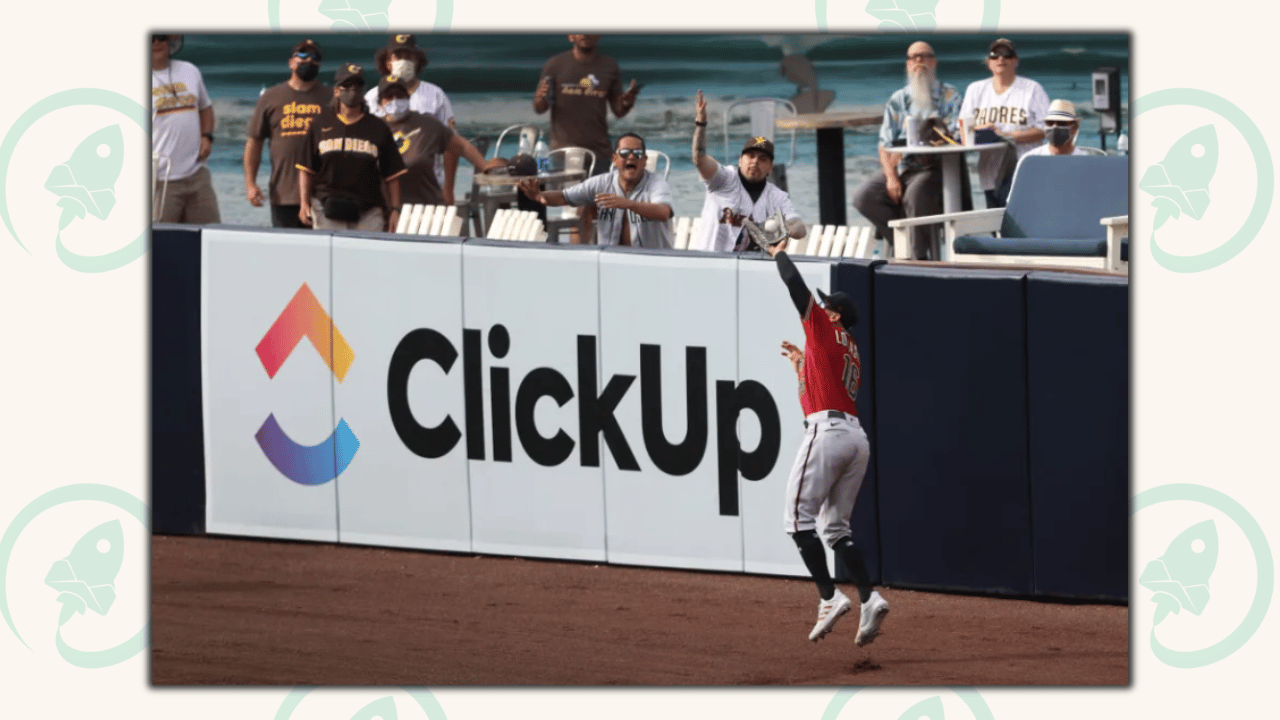
So when growing your product, think about how you can build upon each stage of growth.
Build a strong organic foundation and community.
Then add layers of performance marketing and brand building.
This is how growth snowballs.
For The Zero to One, it’s been your host, Sheldon.
Speak soon and stay awesome!


